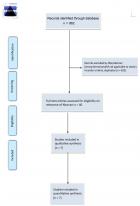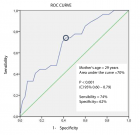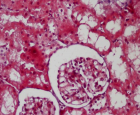Table of Contents
Outcome of liver transplantation for autoimmune hepatitis in South Africa
Published on: 31st December, 2022
Background: Liver Transplantation (LT) is the definitive treatment for Autoimmune Hepatitis (AIH) in patients with decompensated cirrhosis, liver failure and hepatocellular carcinoma. Outcomes of LT in AIH among black-Africans are not well-defined. We performed a single-center retrospective-review of adult LT patients. The study period was from 1st August 2004-31st August 2019. The primary aim was to document 1- & 5- year patient and graft survival. A secondary aim was to compare the survival of black-Africans to Caucasians. Data was analyzed using survival-analysis. Results: A total of 56 LT were performed for AIH. Sixty-seven percent (n = 38/56) had confirmed AIH on explant histology. Of these, the majority i.e., 79% (30/38) were female and 21% (8/38) were male. There were equal numbers of black-African 42% (n = 16/38) and Caucasian 42% (n = 16/38) patients. Rejection was four-times higher in black-Africans as compared to Caucasians. Forty-four percent (n = 17/38) had an acute rejection episode and 13% (5/38) had chronic rejection. Recurrence was found in four black-African females. Post-LT patient survival at 1- and 5- years was 86.5% and 80.7%, and graft survival was 94% and 70.8% respectively. The 5- year patient survival was insignificantly lower for black-Africans (73.9%) as compared to Caucasians (83.7%) (p - value 0.26, CI 6.3 - 12.2). Five-year graft survival was significantly lower among black-Africans (55%) as compared to Caucasians (84.8%) (p - value 0.003 CI 3.8 - 8.1)Conclusion: Black-Africans had a four-fold higher rate of rejection compared to Caucasians. Recurrent AIH was only found in patients of black ethnicity. Similar 1- & 5- year patient survival rates were observed between the two ethnicities. The 5-year graft survival among black-Africans was significantly lower than Caucasians.
Jejunal adenocarcinoma, a rare cancer of the gastrointestinal tract: a comprehensive review discussion epidemiology
Published on: 24th November, 2022
Malignancy of the small bowel is exceedingly rare, accounting for 3% - 5% of all gastrointestinal malignancies [1-3]. However, in recent years because of improved diagnostic accuracy, the incidence of small bowel cancer is rising. It is estimated that 10, 470 new cases of primary SI cancer will be diagnosed in the US with 1450 cancer-related deaths [4]. The most frequent histologic types of small bowel malignant tumors include adenocarcinomas, carcinoids, lymphomas, and sarcomas. Adenocarcinoma of the small intestine is the second most common histologic type of SI cancer. The most frequent location of SI adenocarcinoma is the duodenum (57%), followed by the jejunum (29%) and ileum (13%) [5]. SI cancers are more common in men than women [6]. They occur more commonly in the African-American population and after 60 years of age [7].
A case of coexistent acute severe alcoholic and Q fever hepatitis: The useful contribution of repeated liver biopsies
Published on: 23rd September, 2022
Acute Q fever is a worldwide zoonotic infection due to C. burnetii that may be associated with hepatitis. Nonspecific clinical and biological manifestations may accompany liver involvement, including hepatomegaly and elevated liver biological tests. However, the presence of jaundice is rare. Therefore, making a diagnosis of Q fever hepatitis may be difficult in an afebrile patient with jaundice of recent onset, altered liver function tests, excessive alcohol intake and no reported contact with animals. We report here the diagnostic work-up and complex clinical management of a patient presenting with acute hepatitis resulting from both C. burnetii infection and severe alcoholic steatohepatitis. Positive serology together with a detailed examination of the liver biopsy was able to reveal the coexistence of both Q fever hepatitis with typical fibrin-ring granulomas as well as florid lesions of alcoholic steatohepatitis. A combination of antibiotics, hydroxychloroquine and steroids, guided by the helpful description of changes in histological alterations on repeated liver biopsies during the course of the disease contributed to the slow but favorable outcome.
Correlation of dyslipidemia and athrogenic index of plasma with anthropometric measurements and clinical variables among diabetic patients in Dessie Comprehensive Specialized Hospital, Ethiopia, 2021
Published on: 14th July, 2022
Background: Control of increased athrogenic index of plasma and lipid parameters in the early stage of diabetes mellitus helps diabetic patients to improve their quality of life and treatment outcomes. Limited studies were conducted on the assessment of dyslipidemia and its correlation with clinical and anthropometric variables among diabetes patients but no study was conducted on the correlation of the athrogenic index of plasma with anthropometric measurements among diabetes patients in this study area. The objective of this study was to assess the correlation of dyslipidemia and athrogenic index of plasma with anthropometric measurements and clinical variables among diabetic patients in Dessie Compressive specialized hospital, Northeast Ethiopia.Methods: Institution-based comparative cross-sectional study was conducted from August 2020 to June 2021. A total of 250 diabetic and healthy control respondents were included in the study with convenience sampling. Semi-structured questionnaire of a modified WHO stepwise Approach to Surveillance for chronic disease was used to collect data. Finally, descriptive statistics and correlation analysis were conducted to assess the correlation between variables. A P-value of less than 0.05 was declared as the level of significance.Results: Athrogenic Index of Plasma, Triglyceride to High-density Lipoprotein Ratio, Very-Low-Density Lipoprotein, systolic blood pressure, diastolic blood pressure, triglyceride, waist circumference, WHtR and BMI were statistically significantly higher among type 2 DM groups. There was a significant positive linear correlation between triglycerides and waist circumference, between TG / HDL and WHtR, and between cholesterol and WHtR, but a significant negative linear correlation between HDL and waist circumference among the Type 2 DM group. Systolic blood pressure and pulse showed a significant positive linear correlation with WC, BMI, and WHtR among diabetics groups only. Our study showed that the pattern of lipid abnormalities observed among DM patients was high AIP in 68%, moderate AIP in 16% and all four groups of hyperlipidemia were found in 9% of diabetic patients. All lipid profiles showed a significant very strong positive linear correlation with AIP, but DHL has a significant very strong negative linear correlation with AIP among type 2 DM groups.Conclusion: The proportions of high athrogenic index of plasma and lipid profile disorders were higher in DM patients compared to healthy controls. Dyslipidemia and a high athrogenic index of plasma had a considerable correlation with anthropometric measurements and clinical outcomes of type II DM patients. DM patients who have a higher athrogenic index of plasma and higher lipid parameters should be strictly followed based on their anthropometric measurements.
Laparoscopic surgical treatment of median arcuate ligament syndrome with the retrograde division technique: a case report
Published on: 18th May, 2022
Median arcuate ligament syndrome is a rare entity. This clinical condition develops by compression of the root of a celiac artery with the median arcuate ligament. The typical triad of this syndrome is the following; abdominal discomfort and pain, especially after a meal, and weight loss. In diagnosis, other causes should be ruled out and compression must be demonstrated by any type of imaging method. The main principle of treatment is cutting down the median arcuate ligament. A 54-year-old woman presented with untreatable recurrent abdominal pain and was diagnosed with median arcuate ligament syndrome by imaging with angiographic computed tomography. This patient was operated on. We performed laparoscopic division of median arcuate ligament with the retrograde surgical dissection technique. The patient was discharged from the hospital without any complaint on the third day after surgery. She was still symptom-free after 12 months.The laparoscopic retrograde dissection approach is a safe and feasible treatment modality for median arcuate ligament syndrome.
Treatment of perianal fistulae in crohn's disease with mesenchymal stem cells
Published on: 4th May, 2022
Crohn's disease is a chronic syndrome of the gastrointestinal tract that produces idiopathic inflammation. Approximately half of the patients develop abscesses and/or fistulas throughout their history that are located, mainly, in the perianal region. Current treatments are based on individualized plans that generally use combined pharmacology for symptomatic relief based on glucocorticoids, immunosuppressants or immunomodulators, antibiotics, anti-inflammatories, probiotics, and antibodies, or surgical therapies such as intestinal resections or ostomizations (colostomy and ileostomy) that tend to cause notable side effects in a considerable percentage of patients and a significant decrease in their quality of life.Perianal fistulas consist of abnormal tracts, inflammatory tunnels, or chronic tracts of granular tissue that connect two surfaces lined with epithelium, have an external hole in the skin that borders the anus, and an internal hole located inside it around the anal canal, rectus and sphincters. Treatment is a complex process that requires a multidisciplinary approach and the combination of several treatments. In the short term, the goal is to drain abscesses, reduce inflammatory and infectious processes, guard the fistulous tract with seton or lax lines, facilitate patency, and hinder new formations. In the long term, a total cure and the avoidance of complications that require surgery or the creation of intestinal stomas are pursued.For this reason, new effective remedies with fewer adverse effects continue to be investigated, one of the most promising being the use of mesenchymal stem cells for the regeneration and cure of perianal fistulas and the remission of symptoms. The present bibliographic review delves into this new therapy and analyzes the current state of the situation regarding its efficacy and safety.
Pitfalls in the hemostatic management of a liver transplantation
Published on: 13th April, 2022
Liver Transplantation is fraught with thrombo-hemorrhagic complications, due to the precarious hemostasis of the recipient, anhepatic conditions, and the release of hemostatic factors from the allograft. Disseminated intravascular coagulation and its “flat-line” variant are common causes of hemorrhage and thrombosis, and frequently force the clinician along with a delicate balance between hemorrhage and thrombosis. We present a case that highlights some of the more challenging diagnostic and management decisions in liver transplantation and presents a safe and carefully structured approach to hyperfibrinolysis in liver transplantation.

HSPI: We're glad you're here. Please click "create a new Query" if you are a new visitor to our website and need further information from us.
If you are already a member of our network and need to keep track of any developments regarding a question you have already submitted, click "take me to my Query."


















































































































































